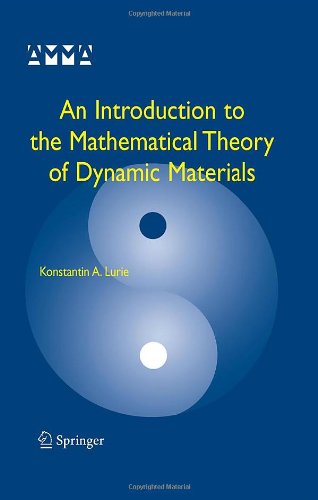

Most ebook files are in PDF format, so you can easily read them using various software such as Foxit Reader or directly on the Google Chrome browser.
Some ebook files are released by publishers in other formats such as .awz, .mobi, .epub, .fb2, etc. You may need to install specific software to read these formats on mobile/PC, such as Calibre.
Please read the tutorial at this link: https://ebookbell.com/faq
We offer FREE conversion to the popular formats you request; however, this may take some time. Therefore, right after payment, please email us, and we will try to provide the service as quickly as possible.
For some exceptional file formats or broken links (if any), please refrain from opening any disputes. Instead, email us first, and we will try to assist within a maximum of 6 hours.
EbookBell Team

5.0
100 reviewsThis book gives a mathematical treatment of a novel concept in material science that characterizes the properties of dynamic materials—that is, material substances whose properties are variable in space and time. Unlike conventional composites that are often found in nature, dynamic materials are mostly the products of modern technology developed to maintain the most effective control over dynamic processes. These materials have diverse applications: tunable left-handed dielectrics, optical pumping with high-energy pulse compression, and electromagnetic stealth technology, to name a few. Of special significance is the participation of dynamic materials in almost every optimal material design in dynamics.
The book discusses some general features of dynamic materials as thermodynamically open systems; it gives their adequate tensor description in the context of Maxwell’s theory of moving dielectrics and makes a special emphasis on the theoretical analysis of spatio-temporal material composites (such as laminates and checkerboard structures). Some unusual applications are listed along with the discussion of some typical optimization problems in space-time via dynamic materials.
Audience
This book is intended for applied mathematicians interested in optimal problems of material design for systems governed by hyperbolic differential equations. It will also be useful for researchers in the field of smart metamaterials and their applications to optimal material design in dynamics.